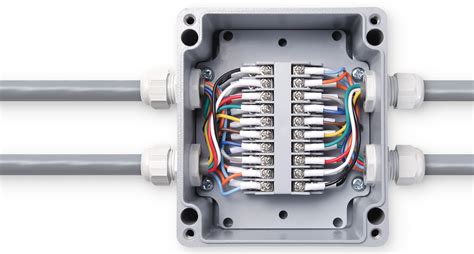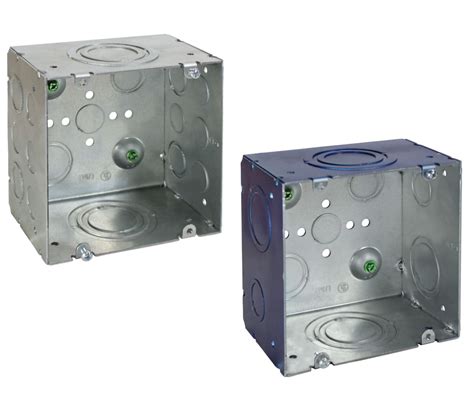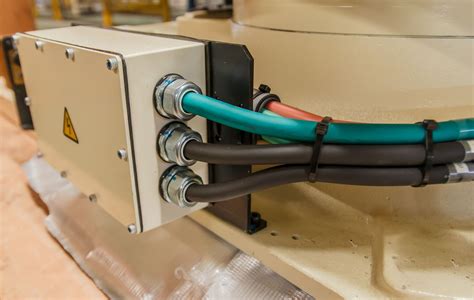conjunction box electrical Choose a location for your junction box that is easily accessible and complies with local electrical codes. The box should be mounted securely to a stud or joist, with its face flush to the wall surface. Metal laser cutting machines, also known as (computer numerical control) CNC laser cutting machines, are available in three main types: CO2 laser cutting machines, fiber laser cutting machines, and Nd: YAG laser machines. You can learn more about how laser cutting of sheet metal works.
0 · types of electrical junction boxes
1 · residential electrical junction box
2 · purpose of electrical junction box
3 · metal electrical junction box types
4 · junction box where to use
5 · junction box vs receptacle
6 · junction box size in mm
7 · junction box electrical price
Industrial CNC Routers are used by meticulous traditional crafters, Master Craftsmen, and large scale, high production manufacturers to produce custom and mass produced furniture.

types of electrical junction boxes
A junction box is a standard electrical box that contains two or more spliced electrical cables. The box must have a removable, accessible cover. Junction boxes can be . Choose a location for your junction box that is easily accessible and complies with local electrical codes. The box should be mounted securely to a stud or joist, with its face flush to the wall surface. A junction box – also known as an ‘electrical box’, ‘jbox’, ‘or ‘terminal box’ – is a protective box where wires are interconnected. Junction boxes are often built into the plaster of a wall, in the ceiling, or within concrete. A junction box is a standard electrical box that contains two or more spliced electrical cables. The box must have a removable, accessible cover. Junction boxes can be placed along electrical conduit, too.
Choose a location for your junction box that is easily accessible and complies with local electrical codes. The box should be mounted securely to a stud or joist, with its face flush to the wall surface.An electrical junction box (also known as a "jbox") is an enclosure housing electrical connections. [1] Junction boxes protect the electrical connections from the weather, as well as protecting people from accidental electric shocks. A junction box is an essential part of the electrical wiring systems for homes and commercial buildings. These metal or plastic boxes house and safely protect a structure's electrical connections. The electrical casings come in .
Unlock the essentials of junction boxes with Vorlane's guide on types, uses, and installation tips for safe and efficient electrical setups. A junction box is not a special type of box but any standard electrical box used to enclose wire splices. The most commonly used box for junctions is a 4-inch square box (either metal or strong plastic), which offers ample space for making wire connections with multiple wires or . A junction box makes that easier by allowing you to connect directly to the main breaker. This negates the need to running wire through the entire house back to the breaker, providing that the power requirements of those components . An electrical junction box is a safety box used to cover wires that have been joined in a single electrical unit. An electrical junction box can either be made of metal or plastic. To save on costs, plastic junction boxes offer a cheaper alternative to metal.
An electrical box, also known as a junction box, is an essential component in electrical installations. It serves as a protective enclosure for electrical connections, ensuring safety and preventing damage to the wiring system. Junction boxes come in various types, each designed for specific applications and environments. A junction box – also known as an ‘electrical box’, ‘jbox’, ‘or ‘terminal box’ – is a protective box where wires are interconnected. Junction boxes are often built into the plaster of a wall, in the ceiling, or within concrete. A junction box is a standard electrical box that contains two or more spliced electrical cables. The box must have a removable, accessible cover. Junction boxes can be placed along electrical conduit, too.
Choose a location for your junction box that is easily accessible and complies with local electrical codes. The box should be mounted securely to a stud or joist, with its face flush to the wall surface.An electrical junction box (also known as a "jbox") is an enclosure housing electrical connections. [1] Junction boxes protect the electrical connections from the weather, as well as protecting people from accidental electric shocks.
A junction box is an essential part of the electrical wiring systems for homes and commercial buildings. These metal or plastic boxes house and safely protect a structure's electrical connections. The electrical casings come in .
Unlock the essentials of junction boxes with Vorlane's guide on types, uses, and installation tips for safe and efficient electrical setups.

A junction box is not a special type of box but any standard electrical box used to enclose wire splices. The most commonly used box for junctions is a 4-inch square box (either metal or strong plastic), which offers ample space for making wire connections with multiple wires or .
A junction box makes that easier by allowing you to connect directly to the main breaker. This negates the need to running wire through the entire house back to the breaker, providing that the power requirements of those components . An electrical junction box is a safety box used to cover wires that have been joined in a single electrical unit. An electrical junction box can either be made of metal or plastic. To save on costs, plastic junction boxes offer a cheaper alternative to metal.
residential electrical junction box

cnc lathe turned parts
Why choose a stainless steel litter box? One of the main benefits of a stainless steel litter box instead of a plastic one is how much longer they last. And not because of the structure – plastic litter boxes are pretty robust and could in theory last for years.
conjunction box electrical|junction box vs receptacle